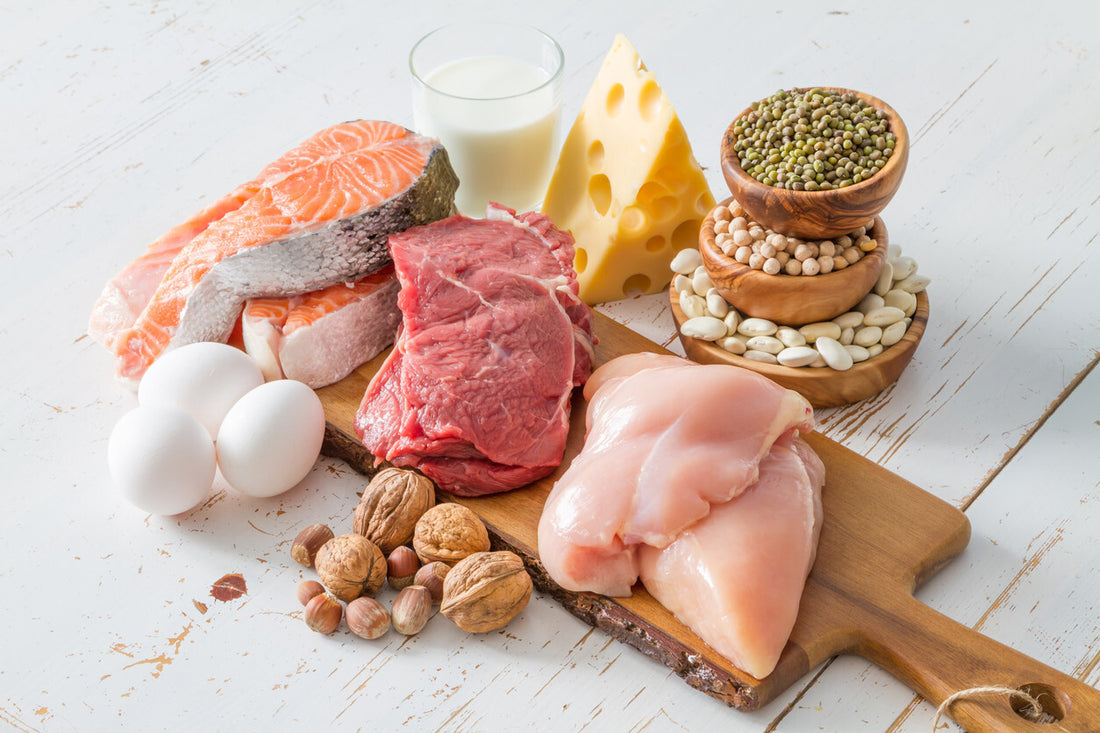
Protein: What is the ideal amount we should consume per day?
Share
This is one of the most common topics for those who are on diets or interested in nutrition. How much protein do you really need per day?
What is protein?
There are three nutrients that we need in large quantities - proteins, carbohydrates and fats.
Proteins are large molecules composed of one or more chains of amino acids in a specific order. Many of these amino acids can only be obtained through food, and are therefore called essential amino acids. The human body is unable to synthesize about half of the twenty common amino acids. It must therefore obtain them through the diet, by eating foods rich in protein. Sources of animal protein, such as meat, fish, eggs and milk, provide all the essential amino acids. Vegetables such as beans, chickpeas, peas and lentils also provide significant amounts of protein. However, in the case of vegetables, not all essential amino acids are present, and some are absent or present in small quantities.
What do we need proteins for/what is their function?
Proteins are important for the structure, function of cells, tissues and organs in the body. Each has unique functions. Proteins are essential components of muscles, skin, bones and the body as a whole. Proteins are essential for the formation of enzymes, hormones and medicines and are essential for maintaining human health. Proteins are also one of the three types of nutrients used as energy sources by the body (with the exception of alcohol), the other two being carbohydrates and fats. Proteins and carbohydrates each provide 4 calories of energy per gram, while fats provide 9 calories per gram.
According to the European Food Safety Agency (EFSA), the population reference intake for adults of all ages has been estimated at 0.8 g protein/kg body weight per day.1
The World Health Organization (WHO) also recommends that adult women consume around 48g of protein per day, and adult men, around 56g.
In Europe, the average protein intake ranges from 99 to 115g per day3, and the WHO states that protein deficiency was eliminated in the European Union after the Second World War. Thus, very few Europeans today suffer from a protein deficiency.
The question is whether there is a benefit to consuming more protein even in the absence of protein deficiency.
Unless you are elderly and have muscle wasting (sarcopenia) or are recovering from an illness, there is no benefit to eating large amounts of protein. A healthy diet A regular balanced diet provides more than the recommended amount of protein to maintain your health. People who exercise moderately every other day do not need any additional protein.
However, those who engage in high-intensity exercise daily may benefit from additional protein from food or other sources.
Protein for athletes
The American College of Sports Medicine, together with the American Dietetic Association and the Dietitians of Canada, recommend a daily intake of 1.2 to 2.0 g of protein/kg of body weight. These specific recommendations for athletes are higher than those for the general population (0.8 g/kg/day). This difference is related to the need for protein for certain functions, namely:
- Repair and replace proteins damaged by physical exercise in the musculoskeletal system, bones, tendons and ligaments;
- Maintain optimal function of all metabolic pathways that utilize amino acids;
- Allow the increase of muscle mass;
- Allow optimal function of the immune system;
- Allow an optimal production rate of plasma proteins.
Conclusion
In short, if you are engaged in moderate exercise, your normal diet will cover your protein needs perfectly. Only if you are regularly involved in an intense training program, 1.2 to 2 g of protein/kg of body weight can help you achieve your goals regarding muscle growth and strength.
- If you do resistance exercises, you should consume amounts at the lower end of the range indicated above;
- If you alternate between resistance and strength training, you should choose a value in between;
- If you are performing strength/power exercises, you should consume amounts at the upper end of this range.
Protein recipes:
Chicken Salad with Quinoa and Avocado
Other topics:
Challenge of the day | Tips | Training
Suggested services:
Diagnosis, assessment/reassessment | Planning | Accompanied training
Suggested ebooks:
100 No Excuses Workouts | Amateur race | Fitness Detox
Suggested training programs:
Military training | Metabolic training
Also check out our training planning service:
The personalized planning service Fitness or Athlete offers personalized training plans tailored to your needs and goals. Includes an initial assessment, a detailed plan and ongoing support. Ideal for training at home with or without equipment, providing flexibility and accessibility.
For more workout tips and inspiration, visit our blog at Home Training .
Bibliographic References:
https://www.efsa.europa.eu/en/efsajournal/pub/2557
http://www.who.int/nutrition/publications/nutrientrequirements/WHO_TRS_935/en/
FAO Statistics Division 2010, Food Balance Sheets, Food and Agriculture Organization of the United Nations
Thomas, DT et al. , Nutrition and Athletic Performance. Medicine and Science in Sports and Exercise, 2016. 48(3): p. 543-568.
Phillips, SM, DR Moore, and JE Tang, A critical examination of dietary protein requirements, benefits, and excesses in athletes. International journal of sport nutrition and exercise metabolism, 2007. 17 Suppl: p. S58-76.


